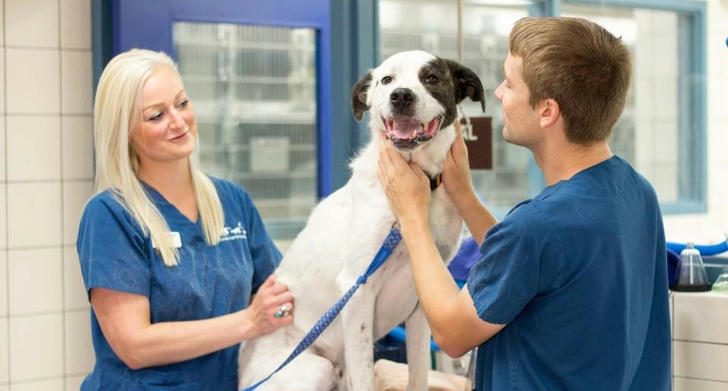Pet Insurance Made Affordable: Practical Help for Seniors & Families with Limited Income
As vet costs climb, low-cost insurance and pet assistance programs help seniors and low-income families afford essential pet care.

Why Pet Insurance for Seniors and Low Income Families Is Crucial
Over 60% of U.S. households own a pet, with cats and dogs being the most common companions. For seniors, pets can reduce isolation, ease anxiety, and encourage physical activity. Similarly, in low-income households, pets often serve as emotional anchors and family members.
However, veterinary costs can be a barrier:
- Routine vet visits typically cost $100 to $300
- Emergency surgery may exceed $2,000
- Ongoing treatment for chronic conditions can last months or years
This makes pet insurance for seniors and pet insurance for low income families more important than ever. These plans help cover major and minor healthcare needs, reducing the risk of financial hardship or forced surrender.
What Pet Assistance Programs Offer
Local and State Pet Assistance for Low Income Families
Many cities and counties offer income-based veterinary services through mobile units or partner clinics:
- Los Angeles County Animal Care provides affordable vaccinations, spay/neuter services, and microchipping.
- Cook County, Illinois collaborates with local nonprofits to issue pet healthcare vouchers for qualifying residents.
These local services serve as an entry point to reliable pet insurance for low income families, especially when combined with accident-only policies or wellness plans.
Pet Insurance for Seniors Through Community-Based Programs
Senior citizens aged 65+ may qualify for pet support services through organizations connected to public health efforts:
- Meals on Wheels pet assistance programs support basic care and food delivery.
- Insurance companies such as Fetch and ASPCA offer special pricing for seniors, often with simplified claim processes.
- PetFirst’s "Golden Paws" Plan removes upper age restrictions, allowing older pet adoptions to be covered easily.
These tailored services and insurance options give seniors both independence and security in caring for their pets.
Federal Relief and Indirect Support for Pet Care
While no federal program directly pays for pet insurance, other forms of relief extend support to pet-owning households:
- SNAP recipients may qualify for associated pet care programs organized at the local level.
- The CARES Act has allowed some municipalities to launch short-term subsidies for veterinary expenses to prevent shelter overflows.
Some Medicaid waiver programs also include pet care as part of disability assistance packages.
Affordable Pet Insurance Providers That Understand Budget Limits
✅ ASPCA Pet Health Insurance
- Plans starting below $15/month
- Adjustable deductibles: $100–$500
- Reimbursement: 70%–90%
- Covers breed-specific conditions and behavioral therapy
✅ PetFirst Pet Insurance
- No age cap—ideal for older pets
- Routine care add-ons starting at $9.95/month
- 5% multi-pet discounts
- Monthly or annual payments for flexibility
Accident-only coverage is also available for as low as $10–$18/month, perfect for younger or generally healthy pets.
Overlooked Pet Insurance Support from Nonprofits
Several programs offer low-cost veterinary support and indirect insurance aid:
- California PAWS Program: Pet care discounts for SNAP households
- Minnesota Pet Food Stamps: Offers up to 30% off vet services through partner clinics
- RedRover Relief: Emergency grants up to $200, available once per household
- Austin Pets Alive!: Hosts low-cost vaccine clinics
- Detroit Dog Rescue: Connects eligible households to subsidized insurance options
These initiatives complement traditional pet insurance for low income families, offering practical, regional solutions.
Pet Insurance Savings Tips: Stretch Every Dollar Further
🔧 Adjust Your Deductible
A higher deductible, such as $500 instead of $100, can lower monthly premiums by up to 40%.
🎯 Choose Accident-Only Plans for Young Pets
These plans cover trauma, poisoning, and injuries at a fraction of full coverage costs.
📊 Use Comparison Tools
Sites like PetInsuranceReview allow price comparisons. For example, an 8-year-old Beagle in Florida may see monthly premiums from $38 to $112 depending on the plan.
📆 Smart Payment Options
Paying annually can result in 5%–8% discounts. Bundling pet insurance with renters insurance may offer additional savings.
👴 Senior-Specific Discounts
ASPCA provides 10% off for AARP members. Some plans waive age or breed restrictions for older applicants.
How to Access Pet Insurance Support
- Local Animal Services: City and county websites list veterinary aid and insurance-related partnerships.
- State Aging Services Departments: Senior centers or health departments often partner with Meals on Wheels and pet-related programs.
- Nonprofit Partnerships: Insurers like ASPCA often coordinate with charities for cost-reducing plans.
- Veterinary Clinics: Many clinics are aware of local grants and may guide clients toward subsidized care or insurance.
Pet Insurance for Seniors and Low Income Families Backed by Assistance Projects
Pet assistance programs, combined with accessible insurance plans, are a lifeline for seniors and low-income pet owners. These tools protect both the animals’ health and their owners’ financial stability.
No one should have to choose between their companion’s well-being and their own budget. With a mix of insurance, public support, and smart planning, quality care is achievable—and sustainable.
